The Shinkansen Train in Japan, commonly known as the "Bullet Train" travels at more than 200 mph.
I had a little time before catching my train this morning and got to talking to the man attending the desk at the hostel in Tokyo
.
It was early morning (around 5:30 a.m.) and no other customers to deal with, so we had a chance to talk some. He is an older man that traveled some when he was younger. One place he was really impressed with was Taiwan. He suggests I go there sometime. Very friendly people he says. I will put that on my list, I think.
Tokyo was an interesting place. The currency in Japan is the Yen. You write it like Y100, with the Y in front of the number. All the other countries I have visited put the money sign AFTER the number, like 50$.
Y100 is about equal to $1.00 dollar now. So, it's very easy to figure the price of things you are buying. Just move the decimal point two places to the left and you know the dollar amount. The bills start at Y1000, which is $10. Everything under $10 comes in coins. You have a Y500 yen coin, Y100, Y50, Y10, Y05, and Y01. I had a hard time reaching for coins when something cost $5 or $1
. I instinctively went for the paper money, but, not finding them, I just used the smallest bill in yen that I had, which would be $10 at the least. This caused me to end up collecting a heavy pocket full of coins.
The Japanese people are very disciplined, it seems. They walk on the side of the walk they should be on (they all walk fast in Tokyo), and ride the bikes on the side of the walk they should ride on. They do not talk loud or act aggressive on the crowded trains system or sidewalks. They are willing to help anytime I ask them. It's truly a large city, but with a kind spirit. The police here do not carry guns, just nightsticks as they walk the streets.
Also, I have noticed there are not the large amounts of motorbikes in Tokyo like I have seen in the other Asian countries. Everything from the shrines and red light district to the anime electronic district was fun to see. (Texas Al would have like the anime district). I did not have my camera the night i went to the electronic and anime area of Tokyo, though
.
I'm glad I got to visit Tokyo, but now I am on my way out of town on the bullet train.
Japan has a highly complex and efficient network of trains throughout the country. Three different types of trains operated by different lines, which makes it confusing for me. You find them in different areas of the station, often taking up and down escalators and walking long hallways to find them. The train lines are color-coded, which helps, once you figure that out. I have noticed it is easier for me to find my way when the huge stations are not so crowded with people rushing in all directions. During the slower times, I have times to look for signs and make turns easier across the hordes of people.
Today, I leave Tokyo for Kyoto in the southern part of Japan. For the first time I get to ride on the Shinkansen train, called the "Bullet Train".
The train has not had any fatal accidents in it's history and is very costly to ride
. I bought the Japan Rail Pass before leaving the U.S. You can buy it online and have it mailed to your address outside of Japan. You cannot buy the pass in Japan. It can only be used by foreigners showing a passport. I paid $280 for a 7-day pass. It will save me a lot of money the last 7 days in Japan traveling on the trains.
The seats are wide and comfortable and always face forward. The trains are known for keeping a tight schedule, usually to the second.
There is little talking on the trains, whether the bullet train, local train or subway trains. It is usually quiet on all the trains. People read or look at their phones or sleep.
I am surprised that I cannot feel the speed of the train while seated. The best evidence of the speed is when I look out the window and see the passing scenery. I got a video at one point that I think demonstrates the speed. I tried several times to video our train as it passed another bullet train, but could not get my camera positioned in time for a video or photo
. You could not see the windows in the other train as we passed, it looked like the train was just solid, without windows.
I see Panasonic and Sony plants while traveling through the countryside. The train goes through many tunnels through the mountains on the trip. I have a window seat and get to see some pretty country when not passing through a mountain.
A cart is rolled through each car with refreshments on it. As the person with the cart enters the car, they stop and bow. When they leave the car, they turn around and bow to the people in the car they are leaving. The conductors do this also as they leave and enter a car.
The trip to Kyoto takes a couple of hours but they pass quickly. The train is a pleasure to ride and the scenery is pretty.
Once I reach Kyoto, the first thing I see when I exit the station is the Kyoto Tower. It's Kyoto's tallest building and stands 300 feet above ground level
. From it's top you can get a 360 degree view of the area. It's located on top of a commercial building with a lot of shops in it. It will become my locator point while in Kyoto. As long as I can see the tower, I will know which direction I need to go.
There are more than 1,600 temples in Kyoto. I will not see them all, but, after stopping by the hostel and leaving my backpack, I start walking to see one of them.
The one I want to see is famous for having 1001 statues of the goddess of mercy. It was founded in 1164. The temple is the longest wooden structure in Japan. In the middle of the building is a large, wooden statue of Kannon, the goddess.
She has 1,000 arms. On each side of her are about 500 human sized statues. They each have 1,000 arms and 11 heads. They say the heads are so she can better handle the suffering of humans. The 1,000 arms help to fight the sufferings.
I paid the $6 to get in to see the temple
. It was a nice visit. You have to take your shoes off at the entry, which is normal. What I didn't like, though, is they would not allow photos. They should inform you of this before you pay to get in. There are signs all along the inside saying if you take a photo your camera will be confiscated. They also warn all cameras will be checked when leaving to be sure no photos were taken. These signs are posted every few feet. It looks like they mean business! The sign said it would cause great harm to the spirit of the goddess or something if you took a photo.
On leaving, no cameras were checked. Also, they had photos of what they said could not be photographed -- for sale. Y100 each or a 2 or 3 page book with 5 photos for Y500. I guess they took the photos to sale on a day when it did not bother the goddess.
I have stopped entering places where photos are not allowed, if I know it in advance. Everytime it turns out they just want to charge an exorbitant price for their photos even after you have paid a good price to see or do whatever event it is
.
The fortune cookie dates back to Kyoto, Japan during the 1800's. A cookie very similiar in appearance to the modern day fortune cookie was made in Kyoto. The Japanese version of the cookie is different in a few ways. For one, they are larger. Also, they are made of darker dough and their batter contains sesame and miso rather than vanilla and butter. The fortune paper was wedged into the bend of the cookie instead of in the hollow part of the cookie. They are still sold in some regions here.
I like Kyoto already. I think this will be a good week.
The hostel is very nice. There are school groups staying here as well as families with children. Of course, there are the backpackers as well. There are a lot of backpackers from France, it seems. Many seem to come to Japan for just a week or two vacation. The other countries I have travelled seem to have more long-term travelers. Maybe it's the expense of Japan that makes it a week or two trip for most, or maybe the location is closer for more to do a week or two trip to. I'm not sure, just n observation.
The hostel has an elevator and 10 floors. Most hostels do not have elevators, regardless of the number of floors. There is a large common room for relaxing and meeting other travelers or using the free wi-fi. A nice kitchen to use, with plenty of dishes and pans and a number of refrigerators to keep food in, if you wish. There is free tea and coffee all day long, what's not to like?
Faster Than A Speeding Bullet (Japan)
Friday, September 27, 2013
 Kyoto, Kinki, Japan
Kyoto, Kinki, Japan
Other Entries
-
87Just Call Me Captain From Now On
May 13137 days prior Hoi An, Vietnamphoto_camera170videocam 3comment 0
Hoi An, Vietnamphoto_camera170videocam 3comment 0 -
88Crossing the Border
Jun 04115 days prior Pattaya, Thailandphoto_camera139videocam 2comment 0
Pattaya, Thailandphoto_camera139videocam 2comment 0 -
89I Can't Find A Tuk Tuk
Jun 14105 days prior Jonesboro, United Statesphoto_camera7videocam 0comment 4
Jonesboro, United Statesphoto_camera7videocam 0comment 4 -
90Get Onboard!
Sep 0324 days prior San Diego, United Statesphoto_camera6videocam 0comment 4
San Diego, United Statesphoto_camera6videocam 0comment 4 -
91As Beautiful As It Is Dangerous
Sep 0522 days prior Kihei, United Statesphoto_camera114videocam 2comment 2
Kihei, United Statesphoto_camera114videocam 2comment 2 -
92A Walk In The Clouds
Sep 0621 days prior Haleakala National Park, United Statesphoto_camera137videocam 2comment 3
Haleakala National Park, United Statesphoto_camera137videocam 2comment 3 -
93The Playground Called Waikiki
Sep 1017 days prior Waikiki, United Statesphoto_camera60videocam 3comment 0
Waikiki, United Statesphoto_camera60videocam 3comment 0 -
94Today I Found A Diamond
Sep 1116 days prior Waikiki, United Statesphoto_camera89videocam 1comment 0
Waikiki, United Statesphoto_camera89videocam 1comment 0 -
95"Don't Worry About It"
Sep 1215 days prior Honolulu, United Statesphoto_camera135videocam 0comment 0
Honolulu, United Statesphoto_camera135videocam 0comment 0 -
96It's Friday the 13th - Does That Matter?
Sep 1314 days prior Honolulu, United Statesphoto_camera55videocam 3comment 0
Honolulu, United Statesphoto_camera55videocam 3comment 0 -
97..........And The Skipper Too
Sep 1413 days prior Waikiki, United Statesphoto_camera73videocam 10comment 0
Waikiki, United Statesphoto_camera73videocam 10comment 0 -
98As The Sun Sets
Sep 1710 days prior Maui, United Statesphoto_camera101videocam 4comment 0
Maui, United Statesphoto_camera101videocam 4comment 0 -
99THE BED!
Sep 198 days prior Tokyo, Japanphoto_camera10videocam 0comment 2
Tokyo, Japanphoto_camera10videocam 0comment 2 -
100First Day in Tokyo
Sep 198 days prior Tokyo, Japanphoto_camera33videocam 1comment 3
Tokyo, Japanphoto_camera33videocam 1comment 3 -
101Iranians Like America
Sep 207 days prior Tokyo, Japanphoto_camera68videocam 2comment 2
Tokyo, Japanphoto_camera68videocam 2comment 2 -
102A Young Woman Passes Me A Note
Sep 216 days prior Nikko, Japanphoto_camera121videocam 0comment 2
Nikko, Japanphoto_camera121videocam 0comment 2 -
103I'm Being Followed . . . and I Feel Uncomfortable
Sep 225 days prior Nikko, Japanphoto_camera54videocam 2comment 3
Nikko, Japanphoto_camera54videocam 2comment 3 -
104Faster Than A Speeding Bullet (Japan)
Sep 27 Kyoto, Japanphoto_camera34videocam 2comment 2
Kyoto, Japanphoto_camera34videocam 2comment 2 -
105The White Deer
Sep 281 day later Nara, Japanphoto_camera67videocam 0comment 0
Nara, Japanphoto_camera67videocam 0comment 0 -
106The Thousands of Gates (Japan)
Sep 292 days later Kyoto, Japanphoto_camera101videocam 1comment 0
Kyoto, Japanphoto_camera101videocam 1comment 0 -
107Burning Flesh -Part I (Japan)
Sep 303 days later Hiroshima, Japanphoto_camera43videocam 1comment 0
Hiroshima, Japanphoto_camera43videocam 1comment 0 -
108Burning Flesh - Part 2 (Japan)
Oct 014 days later Hiroshima, Japanphoto_camera40videocam 0comment 0
Hiroshima, Japanphoto_camera40videocam 0comment 0 -
109Bathing With Naked Men (Japan)
Oct 025 days later Miyajima, Japanphoto_camera52videocam 0comment 2
Miyajima, Japanphoto_camera52videocam 0comment 2 -
110Don't Look Him In The Eyes (Japan)
Oct 036 days later Arashiyama, Japanphoto_camera166videocam 5comment 0
Arashiyama, Japanphoto_camera166videocam 5comment 0 -
111The Land of the Rising Sun (Japan)
Oct 047 days later Shanghai, Chinaphoto_camera50videocam 1comment 0
Shanghai, Chinaphoto_camera50videocam 1comment 0 -
112Feeding the Dead (Cambodia)
Oct 058 days later Siem Reap, Cambodiaphoto_camera35videocam 3comment 0
Siem Reap, Cambodiaphoto_camera35videocam 3comment 0 -
113My Chair is Under Water (Cambodia)
Oct 1013 days later Battambang Province, Cambodiaphoto_camera117videocam 3comment 0
Battambang Province, Cambodiaphoto_camera117videocam 3comment 0 -
114It's Not The Big Top (Cambodia)
Oct 2427 days later Battambang Province, Cambodiaphoto_camera50videocam 4comment 0
Battambang Province, Cambodiaphoto_camera50videocam 4comment 0 -
115Who Stole My Sandals? (Cambodia)
Oct 2629 days later Battambang Province, Cambodiaphoto_camera88videocam 1comment 0
Battambang Province, Cambodiaphoto_camera88videocam 1comment 0 -
116Fire In The Sky (Thailand)
Nov 1650 days later Pattaya, Thailandphoto_camera60videocam 5comment 2
Pattaya, Thailandphoto_camera60videocam 5comment 2 -
117Happy Holidays (Vietnam)
Nov 2559 days later Hanoi, Vietnamphoto_camera1videocam 0comment 0
Hanoi, Vietnamphoto_camera1videocam 0comment 0 -
118The Hands from Hell (Thailand)
Nov 2660 days later Chiang Rai Province, Thailandphoto_camera91videocam 3comment 0
Chiang Rai Province, Thailandphoto_camera91videocam 3comment 0 -
119Black House Chiang Rai (Thailand)
Nov 2761 days later Chiang Rai, Thailandphoto_camera199videocam 1comment 0
Chiang Rai, Thailandphoto_camera199videocam 1comment 0 -
120The Clock (Thailand)
Nov 2862 days later Chiang Rai Province, Thailandphoto_camera58videocam 1comment 0
Chiang Rai Province, Thailandphoto_camera58videocam 1comment 0 -
121The Epic Journey (Laos)
Nov 2963 days later Chiang Khong, Thailandphoto_camera70videocam 2comment 0
Chiang Khong, Thailandphoto_camera70videocam 2comment 0 -
122Shipwreck on the Mekong (Laos)
Nov 3064 days later Huay Xai, Laosphoto_camera70videocam 4comment 2
Huay Xai, Laosphoto_camera70videocam 4comment 2
Comments
2025-05-22
Comment code: Ask author if the code is blank

 Kyoto, Kinki, Japan
Kyoto, Kinki, Japan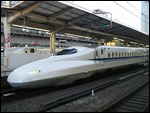


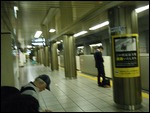
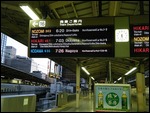
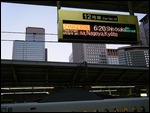
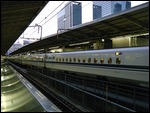
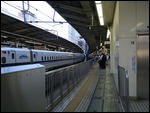







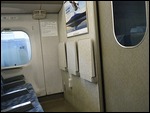
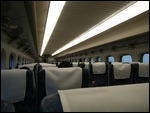
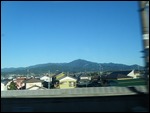
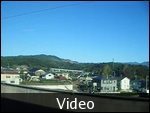
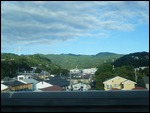
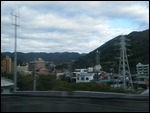
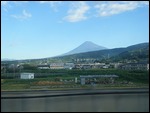
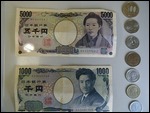
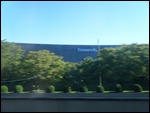
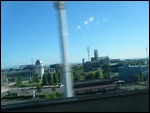
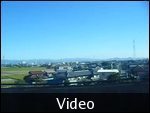
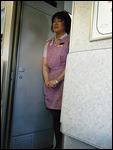
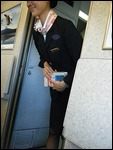
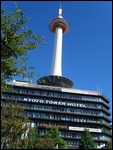
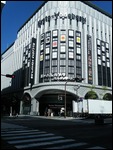
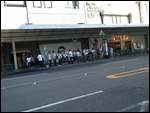
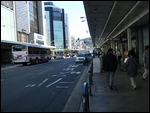
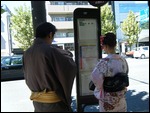
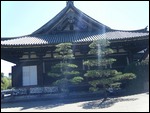
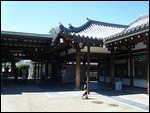
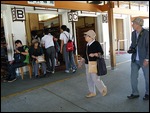
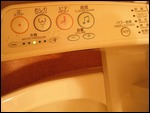
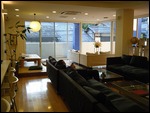
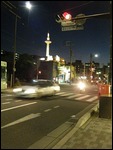
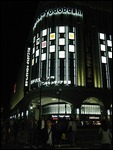
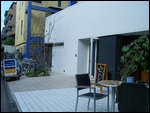
Mike S
2013-10-26
The train looks like a blast. Glad your getting all the coffee you want over there!
usatexan
2013-10-29
The bullet train is a nice way to travel . Expensive, though. Great system of trains in Japan.